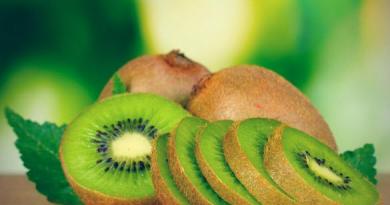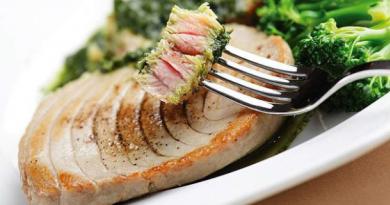The main benefits of rhubarb are laxative, antiseptic and choleretic effects. They are manifested by preparations prepared from the rhizomes of the plant. In folk medicine, the use of leaves, or rather, their petioles, is popular. This part can be a delicious source of nutrients, vitamins and macronutrients, but only if raw materials are properly harvested and used.
plant description
The plant is found not only in the wild, but is also cultivated for home use in household plots, as well as on specialized plantations for medicinal and food production.
The homeland of rhubarb is the central part of China, from which the plant has spread throughout the world. Rhubarb loves fertile and moist soils. Adequate amount of sunlight is required for normal vegetation of the plant. Rhubarb grows on the territory of Kazakhstan, is found in the West of Siberia. In the Altai Territory, the plant is cultivated. Distributed on the territory of the CIS countries.
Morphological characteristics
Despite the height of rhubarb (about 3 m), it is classified as a perennial herb. The large size of the leaves allows it to be used to decorate private garden plots. The description of the parts of the plant is as follows.
- Root. The root system of rhubarb is represented by a short rhizome, from which long roots extend, absorbing moisture. The rhizome is multi-headed, covered with dark brown bark. As a rule, it is small in size. But the roots are very long, deeply penetrating into the soil. Powerful and fleshy, they have a yellowish color. Harvested together with rhizomes.
- stem. It has an impressive diameter - about 5 cm. Naked, erect, it weakly branches upwards. The upper part of the stem ends with an inflorescence. There are reddish spots on the smooth surface.
- Leaves . Basal rosettes of leaves provide large volumes of the plant, because large leaf plates, reaching a length of 75 cm, sit on petioles - up to 1.5 m long. The petiole of a cylindrical shape may have a slightly furrowed surface, as well as red spots on it. The leaves are pubescent from below with long hairs, attached to the petiole with a heart-shaped base. The leaf shape is broadly ovate. The edge is wavy or coarsely incised. The end of the sheet is pointed. Stem leaves alternately attached to the stem, with short petioles with a wide bell. The size of the stem leaves is much smaller than the basal ones.
- Flowers. The paniculate inflorescence of rhubarb is located at the very top of the stems. It is formed by small flowers, pinkish-white or red. Corollas eventually fall off (shortly after pollination of the flower). Rhubarb blooms from June.
- Fruits. Nuts are small in size, not exceeding 1 cm. Each fruit has three faces and wide lionfish for better distribution. Fruit ripening begins in July, and ends completely by the month of August.
Rhubarb propagation occurs with the help of seeds that germinate well, immediately after falling into favorable conditions - warm, moist, fertile soil.
What does the aerial part contain
Rhubarb petioles are rich in pectins, fiber, starch and sucrose. These substances are capable of:
- improve digestion;
- stimulate peristalsis;
- give the body a boost of energy;
- to increase tone during a decline in strength.
Of the vitamins, rhubarb stalks contain vitamin K, as well as ascorbic acid.
- Vitamin K. Improves blood clotting, prevents internal bleeding. Also, this vitamin is necessary for normal bone mineralization, absorption of calcium and vitamin D, as well as their effective interaction. In addition, vitamin K affects the permeability of the vascular wall and prevents capillary fragility.
- Vitamin C. The most powerful natural antioxidant, stimulator of cellular respiration and activator of immune responses.
Of the minerals, rhubarb stalks contain a large amount of silicon, as well as calcium and potassium, being an additional source of these substances for the human body.
Young petioles are rich in succinic, malic, oxalic acid. They are participants in the metabolism, protect the body from the action of free radicals, stimulate the formation, as well as the excretion of bile and urine.
Oxalic acid, the excess of which leads to the formation of kidney stones, is found in large quantities in adult plants. To prevent an overdose of this compound, experts advise eating petioles collected from young plants (up to 35 days of growth).
The chemical composition of the roots
The basis of the chemical composition of rhubarb rhizomes is glycosidic compounds of different groups.
- Tannoglycosides. They combine tannins, as well as derivatives of gallic acid. These compounds provide astringent, anti-inflammatory, enveloping effect from the use of rhubarb, and are also sorbents for other substances. Tannins form a protective film on the mucous membranes that protects the nerve endings and receptors from excessive irritation, which causes an antispasmodic and mild analgesic effect from taking rhubarb roots.
- Anthraglycosides. Represented by chrysophanein, glucoaloemodin, glucorein. These compounds have an irritating effect on the intestinal walls, activating its peristalsis in atonic constipation. In addition, anthraglycosides stimulate the production and excretion of bile, have a mild diuretic effect.
- resins. Provide antibacterial action of rhubarb, as well as its ability to fight viruses and fungi.
- Pectins. Envelop the surface of the mucosa, protecting it from excessive irritation. Adsorb toxins and bacteria.
Interestingly, the effect of rhubarb differs depending on the dosage of its use. Large doses have a clear laxative effect, and small ones strengthen.
Healing properties and benefits of rhubarb
The longest use of rhubarb for medicinal purposes is Tibetan medicine. In China and Tibet, this plant is included in many collections due to its ability to positively affect all body systems.
In our country, the following abilities of rhubarb are most valued.
- Action on digestion. Rhubarb regulates appetite, helps to saturate the composition of digestive juices with enzymes, and normalizes the acidity of the stomach. The plant can be used for gastritis and ulceration of the mucosa, as it promotes its healing. It is also used to treat any constipation, with bowel weakness. The plant normalizes the intestinal microflora, eliminates the processes of decay. Anti-inflammatory abilities allow you to treat hemorrhoids, colitis, proctitis with the help of rhubarb.
- Effects on the skin. Rhubarb whitens age spots, helps to remove scars. The healing effect is actively used in the treatment of psoriasis, eczema, wounds, trophic ulcers.
- Antitoxic effect. Rhubarb preparations absorb poisons, toxins, decay products of substances. This ensures the ability of the plant to eliminate intoxications of any origin. With the help of rhubarb, you can quickly overcome a hangover. The root is used in the complex treatment of hepatitis and poisoning.
- Restorative influence. Rhubarb stimulates the immune system, as well as hematopoiesis. The plant helps to put weakened patients who have had pneumonia, tuberculosis, anemia, and large blood losses on their feet. The ability of rhubarb to cheer up and add strength has long been known. The plant is included in the composition of fees for weight loss, as it improves metabolism.
- Hypoglycemic action. Rhubarb leaves (petioles) are good at lowering blood sugar, helping to maintain a stable level in diabetics. They should eat fresh petioles.
- Anti-inflammatory effect. Rhubarb rhizomes are given the ability to relieve internal inflammation in diseases of the appendages, arthritis, and gout.
In cosmetology, rhubarb is also highly valued for its antibacterial and healing properties. Infusion of the plant removes acne, vitiligo, acne, boils, various rashes. Recipes for use are very simple - they rub the affected areas of the skin with crushed petioles or plant juice. Among the cosmetic indications for use, alopecia is also listed. The use of roots for hair is due to the vitaminizing and restorative effect.
Cautions
The multifaceted benefits of rhubarb do not mean that everyone can use it, and uncontrollably. The harm of rhubarb can occur in people suffering from kidney stones and nephrolithiasis, since a side effect of the plant is the deposition of oxalate salts.
In addition, people with hyperacidity, stomach ulcers, and cirrhosis of the liver should treat rhubarb with caution.
Rhubarb contraindications include diarrhea due to the risk of it continuing and dehydration as a result. In limited quantities, rhubarb desserts can be consumed by older people, while for children it is better not to use the plant. During pregnancy, as well as during breastfeeding, it is better to refuse rhubarb in any form.
Procurement of raw materials
The healing properties of rhubarb are assigned not only to its roots, but also to petioles. For a variety of harvesting, you can use a young plant. In the case of collecting old leaves, the top layer is peeled off the petioles. Rhubarb can be frozen, dried, and canned in a variety of ways.
dried roots
Rhubarb fingered. Botanical illustration from William Woodville (1752–1805) Medical Botanist, 1790.
Peculiarities . Traditional medicine uses rhubarb roots and rhizomes that are dried immediately after harvest. Only plants that have reached the age of four are suitable for harvesting raw materials. It is during four years that the maximum accumulation of useful substances occurs.
Procurement stages
- Collection begins in September, ends in mid-October. The plant is dug up with a shovel, trying to drive it as deep as possible into the ground. After that, the bush is pulled by the rosette to gently and gently pull the long roots out of the soil.
- The above-ground part is cut off from the underground part. Roots and rhizomes are well shaken off the soil, dry and rotten parts are cut off, washed with plenty of cool running water. The roots are cut into pieces about 10 cm long, after which they are laid out in a shaded place in the air to dry out the remaining moisture and slightly wither.
- Dried roots are laid out in dryers, set the temperature to 60 ° C. Dry until the raw material is completely dry.
With proper collection and drying, as a result, dried roots are obtained with a dark brown surface and a yellow-pink, granular core, with a specific smell and astringent-bitter taste.
Freeze
Peculiarities . To preserve all the useful properties of petioles, it is important not to subject them to heat treatment. To preserve the color of the product, it is recommended to blanch the petioles in boiling water. But this procedure significantly reduces the useful qualities of the plant, therefore, if you want to preserve the benefits of the product, it is better to refuse it.
Procurement stages
- The petioles along with the leaves are cut off from the underground part. Gathering in a uniform bundle, completely cut off the leaf plates.
- The stalks are washed with cold water. Dry from excess moisture by spreading them on paper towels. Cut into cubes, lay out in one layer on a wide baking sheet.
- A baking sheet with cubes of rhubarb petioles is placed in the freezer for one hour, after which the raw materials are poured into a plastic bag, excess air is squeezed out of it, tied with an elastic band and placed in the freezer for storage.
Frozen rhubarb can be used to prepare medicines, compotes, jelly, fillings in pastries, add to soups.
Dried petioles
Peculiarities . You can prepare rhubarb leaves for the winter, preserving its beneficial properties, by drying. Crushed dry petioles are used in cooking and medicine. They enrich the taste of salads, confectionery, and are added to sauces.
Procurement stages
- Leaves are cut off from the underground part of the plant. They are collected in a bunch and the leaf plates are completely removed, getting clean red petioles at the exit.
- Petioles are washed with running water, cut lengthwise into several parts.
- It begins with drying the petioles in the open air. To do this, they are laid out on a tray lined with paper or cloth in one layer. Put the tray in the open sun. Dry for two days. The dried petioles are folded on a baking sheet in a thin layer and dried in the oven for two hours at a temperature of 90 ° C. Dried raw materials are stored in glass jars whole or after grinding.
Delicious preserves
The beneficial properties of rhubarb for the body during its conservation are manifested in the form of a tonic, tonic, and digestion-improving action. Marmalade, wine, various sweet and sour sauces are prepared from rhubarb. For the preparation of medicines at home, dried roots are used, as well as dried and frozen petioles.
Stem compote
Peculiarities . To prepare a delicious rhubarb compote, you can add apples, raisins, citrus fruits, cinnamon, cloves, vanilla sugar. The amount of sugar, fruits, petioles and spices can be varied according to your taste.
Preparation and application
- Peeled petioles are washed with running water.
- Petioles are cut into cubes, poured with cold water for 20 minutes to seal their structure.
- Boil water in a saucepan, add sugar at the rate of half a glass of sugar per liter of water. Add additional ingredients and rhubarb.
- After a slight boil for half an hour, the compote is poured into prepared jars, rolled up with lids.
Juice and candied fruit
Peculiarities . These blanks are made at the same time. The result is two healthy and tasty products.
Preparation and application
- The leaves are cut off from the rhizomes. Separate the petioles and leaf blade.
- The petioles are washed with cold water, dried, cut into pieces.
- The cut stalks are sprinkled with sugar. Placed under pressure for a day.
- The released juice is drained, boiled and rolled into sterilized jars.
- The petioles are laid out on a baking sheet lined with parchment, put in an oven to dry at 60 ° C. Ready candied fruits should be stored by putting them in linen bags.
Jam
Peculiarities . The tool is contraindicated in diabetes, it is given with caution to children due to the high sugar content. Perfect for adding to tea, pastries, to support body tone in the cold season.
Preparation and application
- Petioles are separated from the underground part and leaf plates, washed with cold water.
- The petioles are cut into cubes, covered with powdered sugar at night, observing a ratio of 1: 1.
- Bring the mixture to a boil in the morning. Add a rosemary branch and cook for ten minutes.
- Pour jam into prepared jars, roll them up.
Jam will have an interesting taste if you add bananas, citrus fruits or spices.
Medicinal use
The use of rhubarb also implies self-preparation of medicines.
Infusion from constipation
Peculiarities . Rhubarb can be addictive. Therefore, using it as a laxative, it is better to alternate such an infusion with pharmaceutical preparations.
Preparation and application
- Two tablespoons of dried rhizomes are thoroughly crushed in a mortar.
- Pour raw materials with a glass of boiling water.
- Insist 10-15 minutes.
- Filter, drink a third of the drug before bedtime.
Powder for diarrhea
Peculiarities . Rhubarb powder is equally active both against diarrhea and flatulence, spasms in the intestines, and dysbacteriosis.
Preparation and application
- Dried roots are ground in a coffee grinder until a powder is obtained.
- Use inside on the tip of a knife, washed down with water. Multiplicity of reception per day - two times. To improve the taste, the powder can be mixed with honey.

Decoction for hypertension
Peculiarities . Dried petioles are used to prepare the product. The decoction has general strengthening properties.
Preparation and application
- Two tablespoons of dried petioles pour 300 ml of boiling water.
- Insist until completely cooled.
- Filter the broth, consume the entire volume per day, dividing it into three times (half a glass).
According to reviews, all homemade rhubarb preparations have a pleasant taste and are very mild.
The medicinal properties of rhubarb, depending on the method of application of the plant, manifest themselves in different ways. To obtain a safe therapeutic effect, it is important to follow the recommendations for taking and dosing drugs. In the presence of chronic diseases, treatment with rhubarb should be agreed with the doctor.



